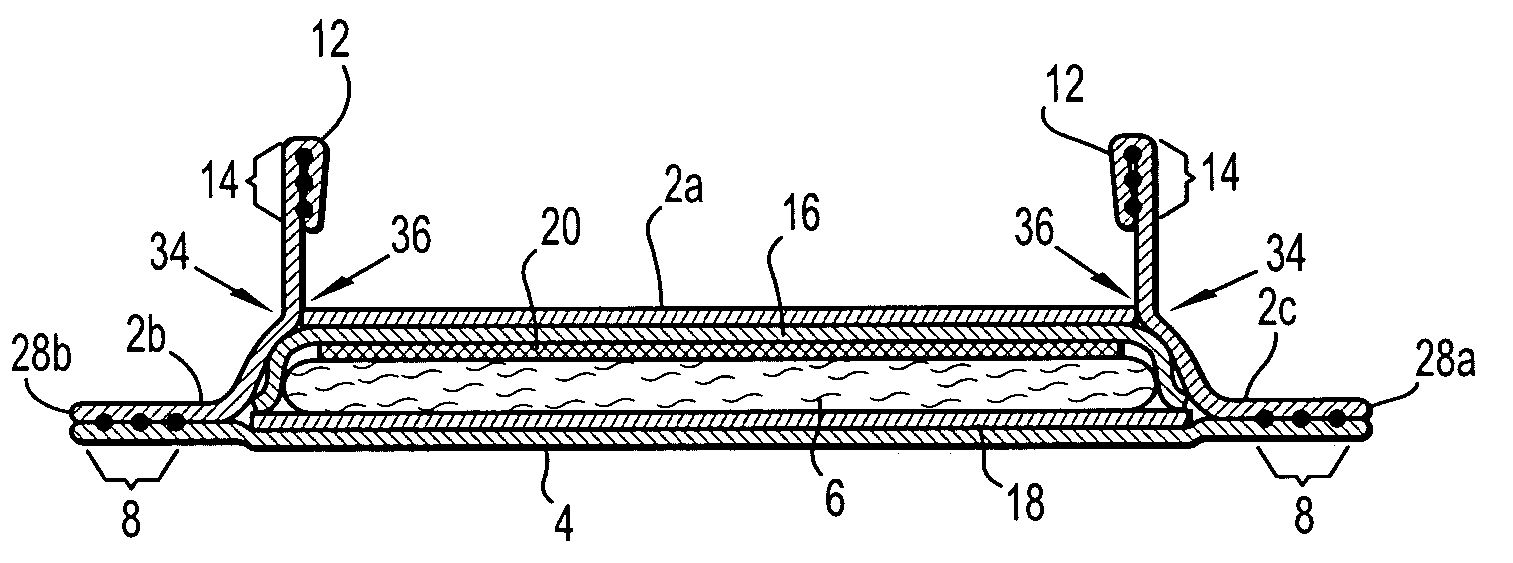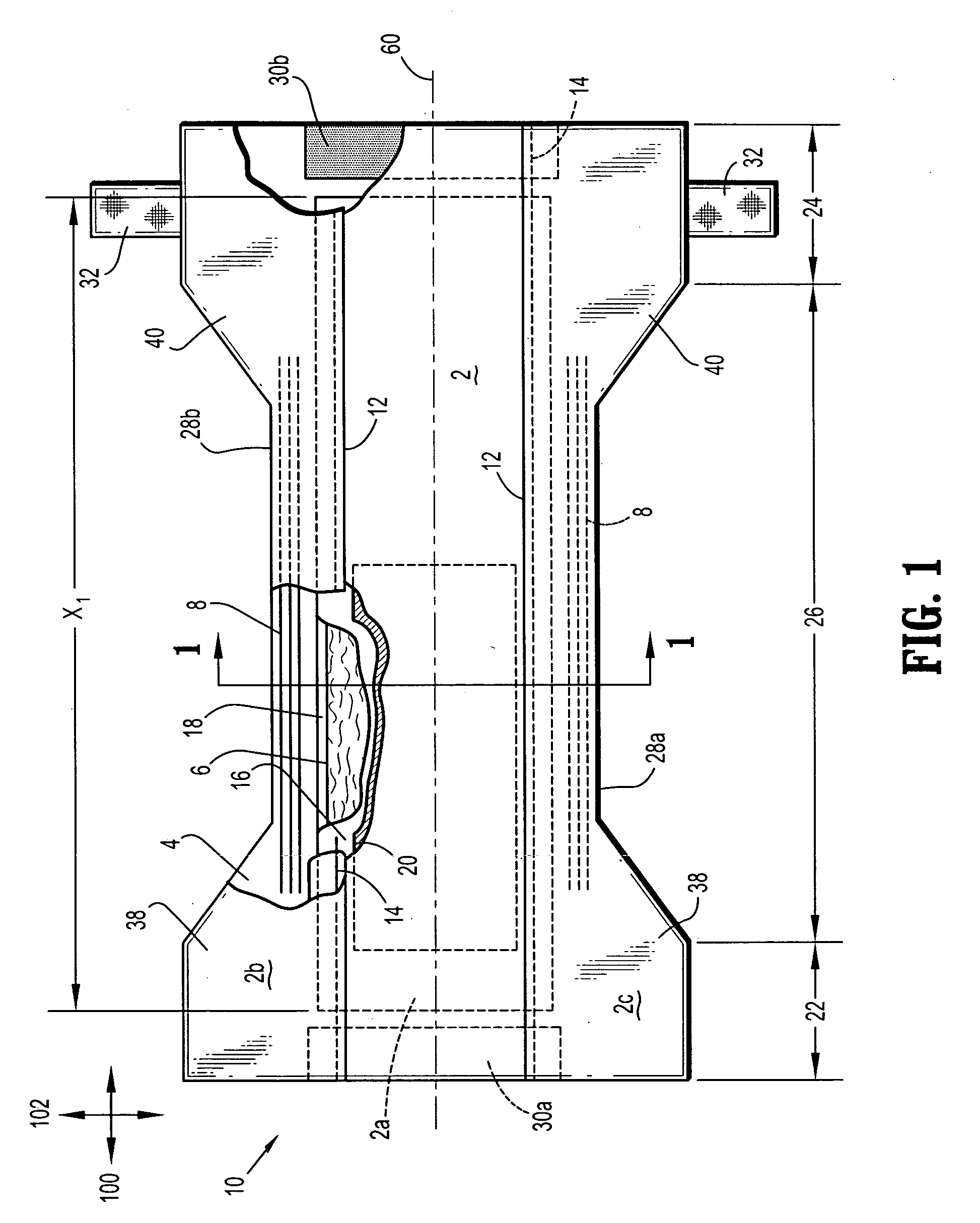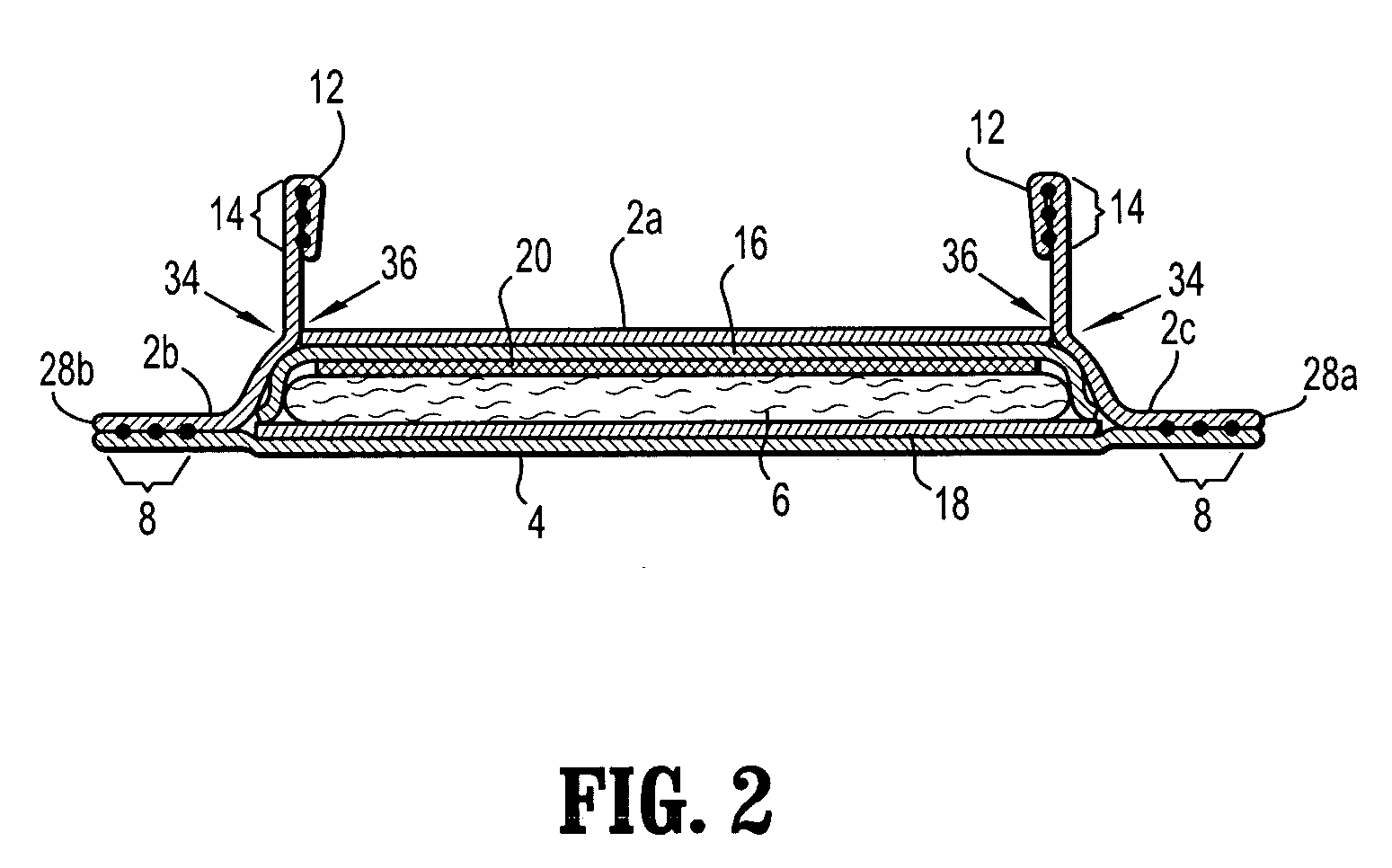Gel blocking often leads to leakage from the absorbent article well before all of the
absorbent material in the core is fully saturated.
However, in order for superabsorbent materials to function, the liquid being absorbed in the absorbent structure must be transported to unsaturated superabsorbent material.
Fluff / SAP diaper cores containing more than 50% SAP generally result in lower SAP efficiency because of gel blocking.
Increasing the basis weight decreases the performance / cost ratio of the absorbent core, making them uneconomical.
Also, increased basis weights tend to affect the fit and comfort of the garment, as well as impacting the packaging and shipping costs.
Attempts to increase the
relative weight of SAP by reducing the basis weight of the conventional
fluff pulp have resulted in failure because
low density fluff pulp mats have been unable to withstand the tensile loads placed on them during the manufacturing process.
Such cores also exhibit poor
wet strength, making them unstable during use, and fail to adequately secure the SAP in place.
One potential drawback with DFC cores, however, is that known methods and apparatus for producing such cores typically require two separate tissue sheets to be used during manufacturing to encase the tow and SAP.
The use of two tissue sheets may, for example, increase the cost or complexity of the manufacturing operation.
A problem with SAP-containing fibrous cores has been to provide the SAP into the fibrous web in a controlled manner.
Such methods have been found to be inefficient during startup and transitions in the
manufacturing line speed because they require a relatively large amount of time to provide a stabilized mixture of SAP and
fluff pulp, leading to the creation of a large number of
scrap products until stabilization.
Such wet
forming processes typically require more manufacturing steps and are more expensive than dry forming methods.
Although such devices may be suitable for providing an even flow of SAP or other powdered and particulate additives to absorbent cores, they rely on relatively complex feeding machinery, including a
rotary valve that uses a pneumatic SAP conveyor to return undistributed SAP back to a supply container.
Pneumatic conveyors typically require a relatively long time to become pressurized and to convey the SAP, causing inefficiencies during transitional phases, such as when the
machine operating speed varies, such as during start-up and shut-down, or when it is desired to change the amount of SAP being fed to the core.
The additional parts of such feeders may also be expensive and subject to wear and other service problems.
Such systems rely on relatively complex air conveyors, that may be susceptible to blockage and may not efficiently accommodate as wide a variety of particulate,
powder and fibrous materials as other systems due to their relatively small passage sizes.
Indeed, it has been found that the
compressed air used in such pneumatic conveyors is often contaminated with oil that may
cause blockage, SAP degradation, and other problems.
Such systems may also require a relatively long time to stabilize, leading to inefficiencies during transitional phases.
Other known SAP feeding systems are disadvantageous for a number of reasons.
First, the mixture of
fiber and SAP still is subject to local concentrations and shortages of SAP.
Second, these feeding systems typically can not be controlled accurately enough to provide concentrations and shortages of SAP when they are desired.
Third, such feeding systems can not be controlled to accurately provide reduced SAP amounts that are necessary during transitional phases, leading to improperly loaded cores during those phases of operation.
 Login to View More
Login to View More  Login to View More
Login to View More 


